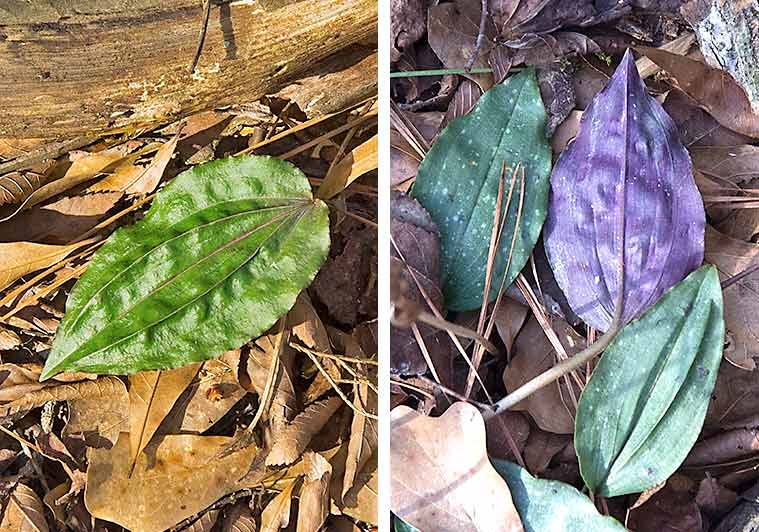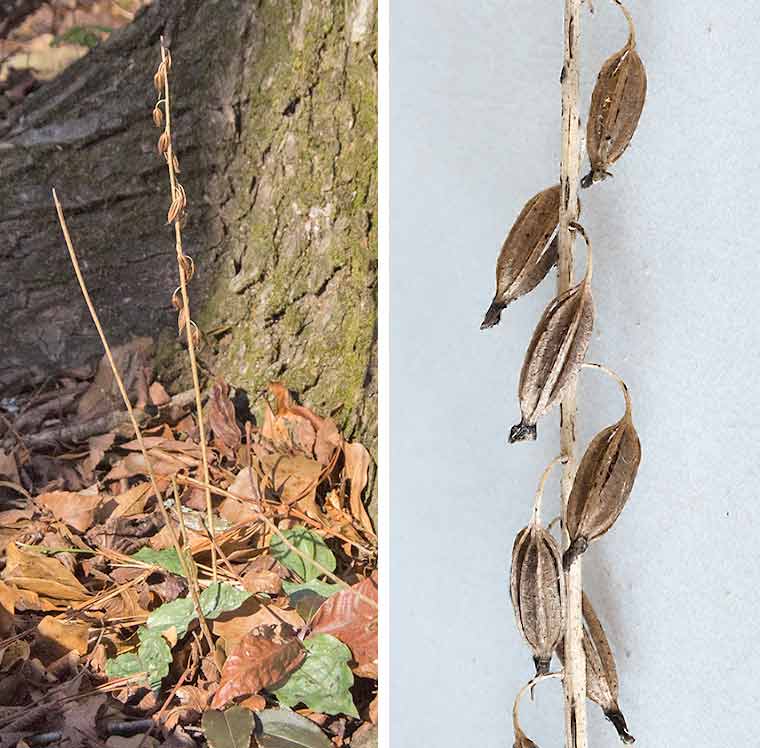If you go out into the woods in our area (or in much of the southeastern U.S.) this time of year, you might see a bright green, longitudinally pleated leaf looking very conspicuous against a carpet of dead leaves. If you turn one of these leaves over, you will see that the bottom is a deep purple color. This is, in fact, a plant that only has one leaf. Furthermore, that leaf is produced in the fall, stays green all winter, then dies back in early spring. The photograph in the right above contains three plants, each with a single leaf.
In the summer, long after the leaf has died back, the plant will produce a spike of flowers. Each of the small brownish flowers was thought by those who first described the plant to have a resemblance to a cranefly (craneflies look like mosquitoes on steroids). This plant is in the orchid family (Orchidaceae). More specifically it is a Cranefly Orchid (Tipularia discolor). The genus name, Tipularia, is derived from “tipula” the Latin name for a cranefly.
Usually when one thinks of orchids, a steamy tropical locale comes to mind. One supposes that all orchids have brightly-colored and spectacularly large flowers. That is only part of the picture, however, The orchids make up one of the most successful and widespread of plant families. They are found from the tropics to the subarctic, and there are an estimated 25,000 species in all. In North America north of Mexico, more than 150 species have been described, and in Georgia there are more than 50 species. Many of them, like the Cranefly Orchid are quite common.
The lower photograph on the left shows a group of Cranefly Orchids at the base of an oak tree. Two flowering stalks are present; one of them still contains the remains of the small, ridged fruiting capsules. Each of these small capsules would have held thousands of tiny seeds.
The flowering stalks that are produced in the summer are dull colored and inconspicuous. If you want to see some this coming summer, go out into your woods and mark the location of these winter leaves. Then check periodically starting in July, and you may be treated with a view of the flowers themselves. I will try to include a picture of some flowers in one of my summer posts.



This is fascinating. I would love to see the flowers this summer!
I have staked some out in our woods. I will show them to you if they flower this summer.